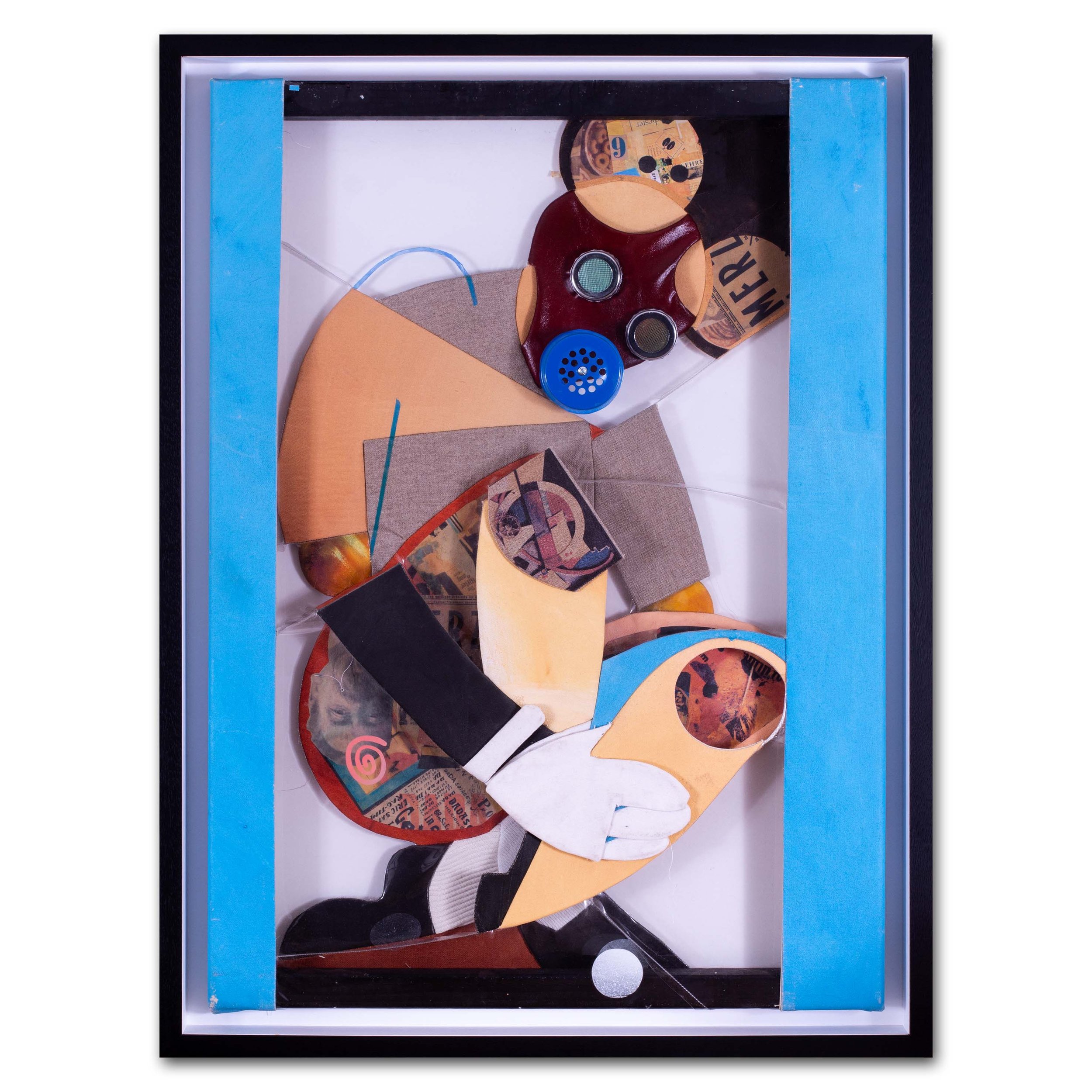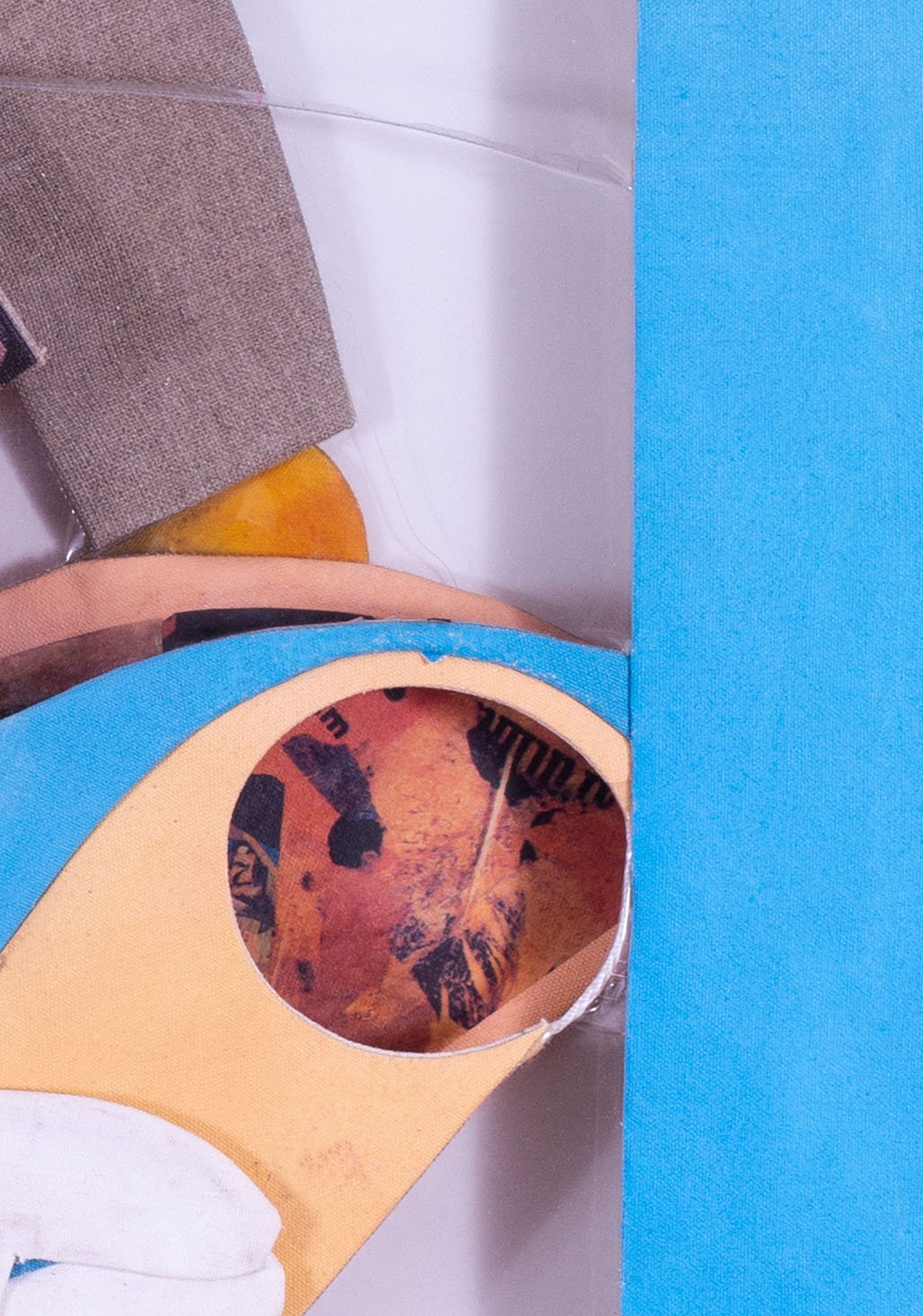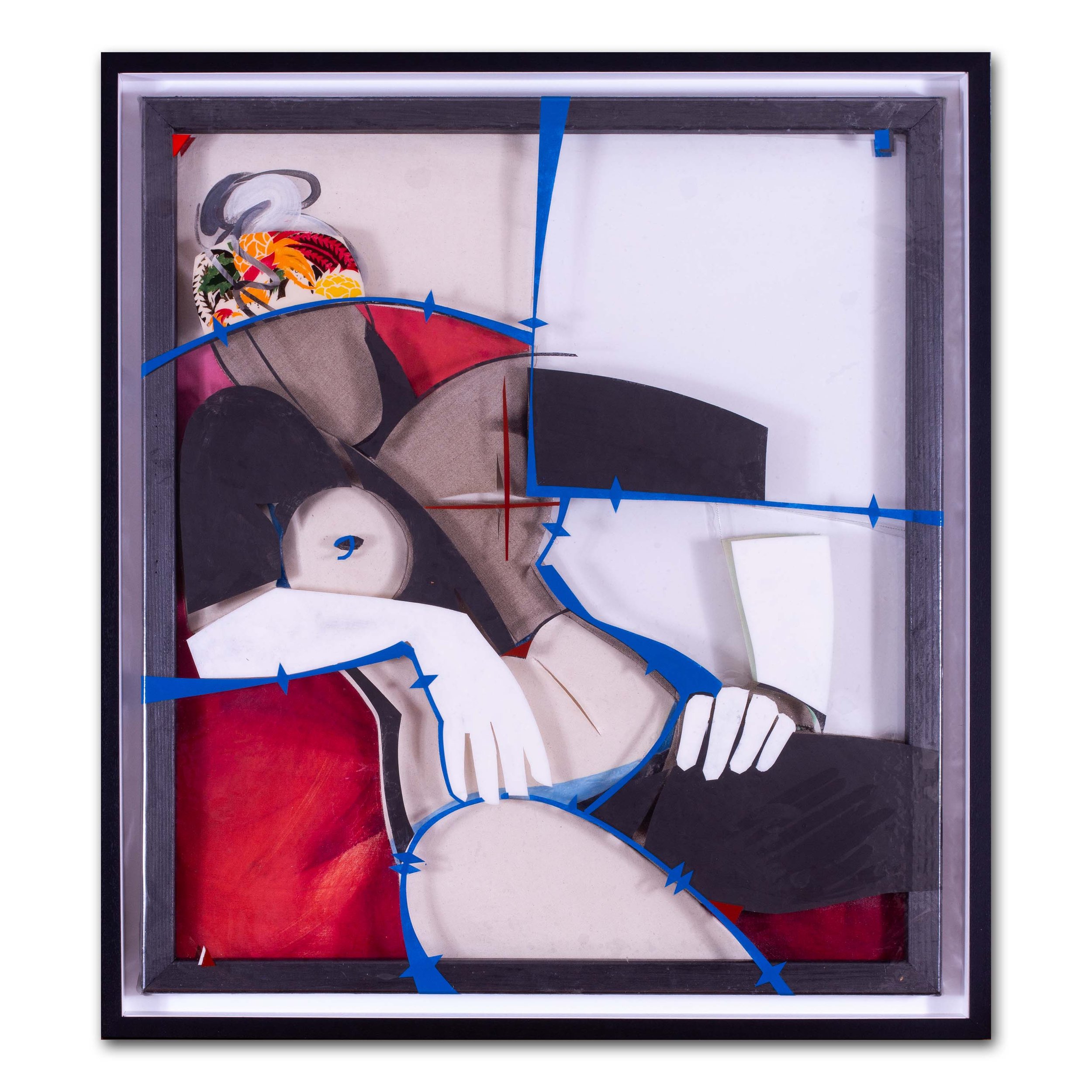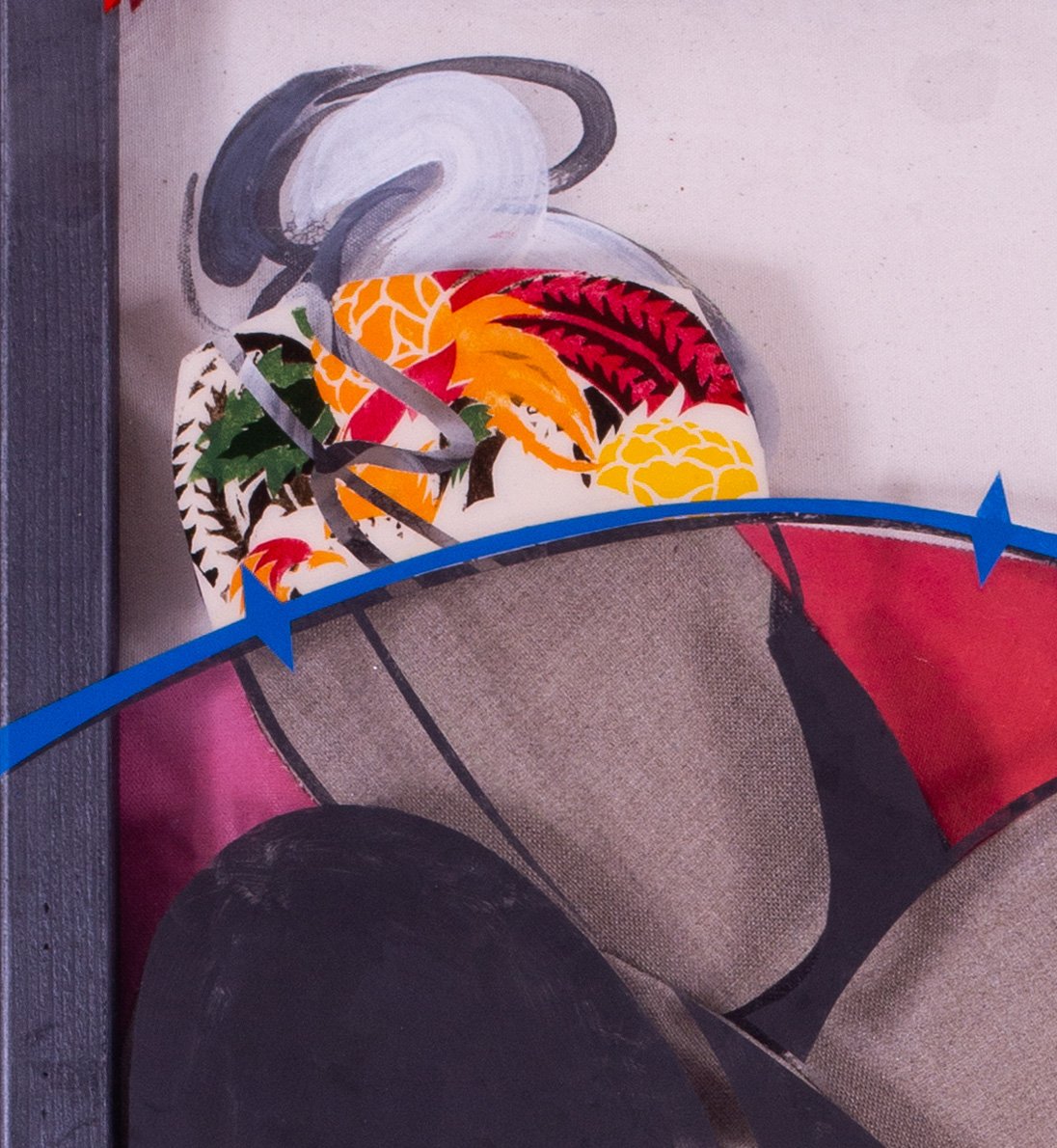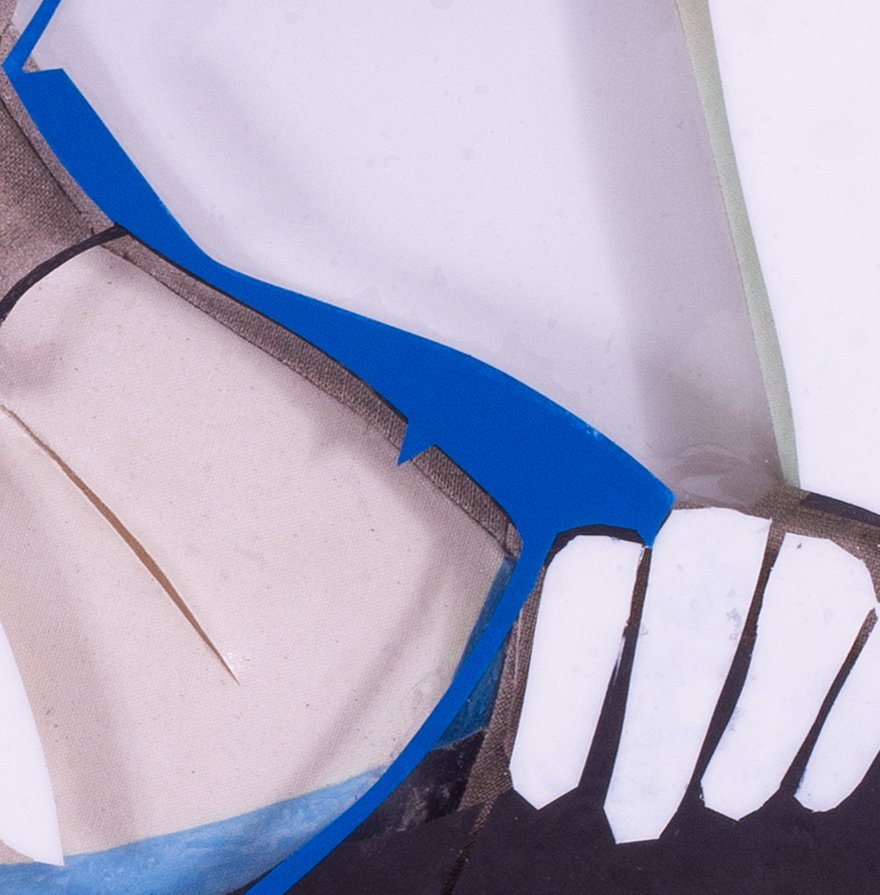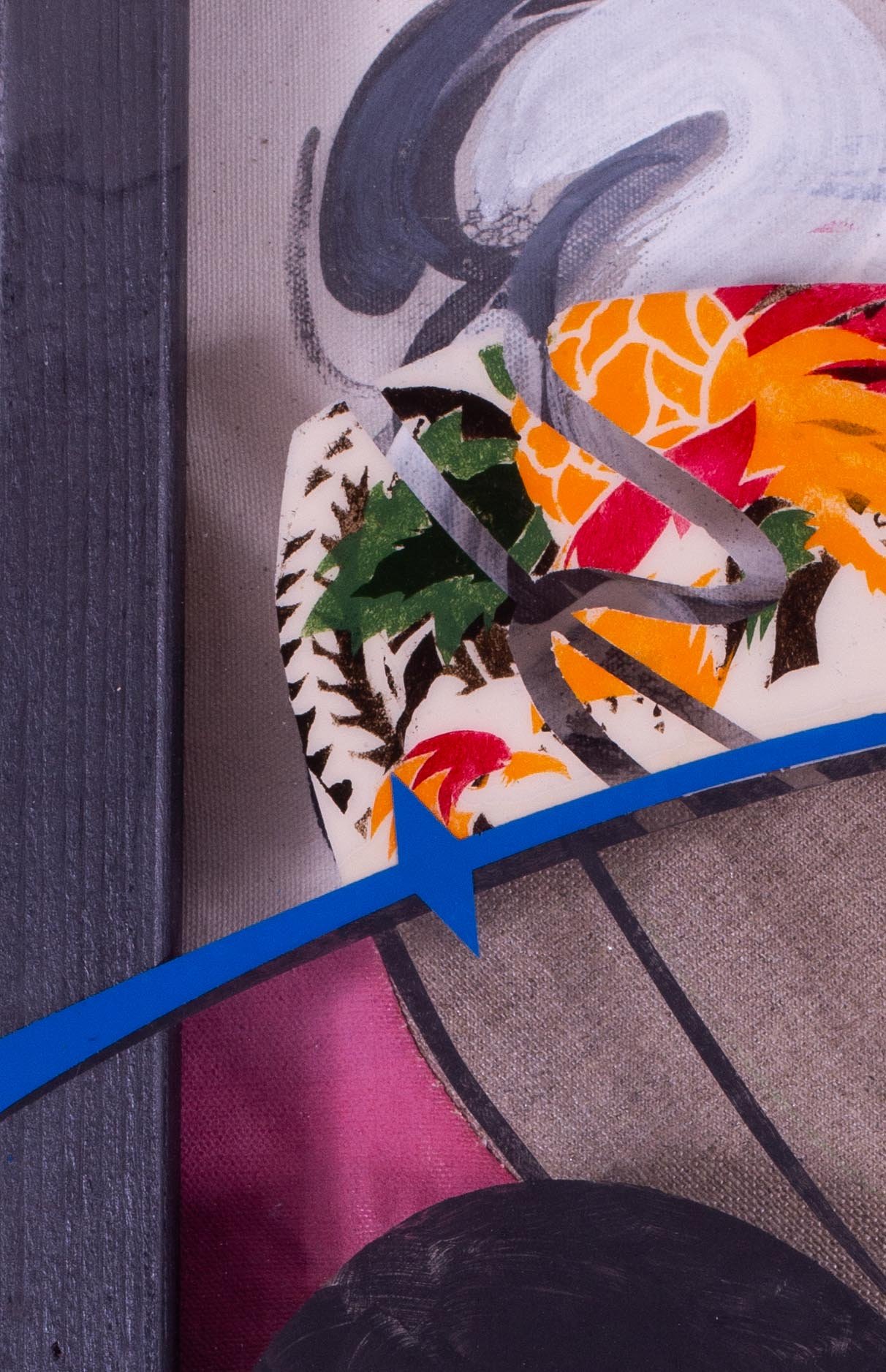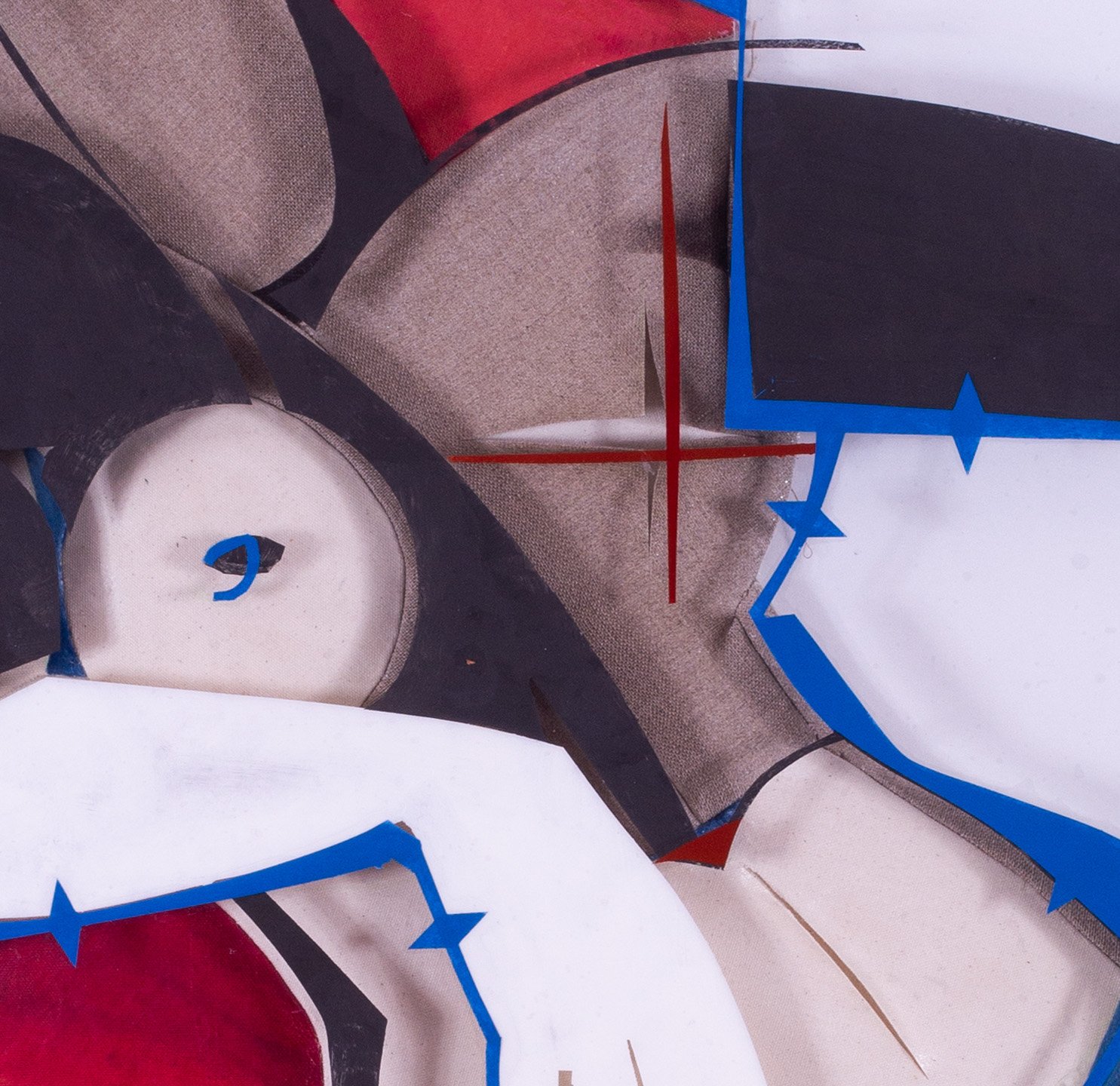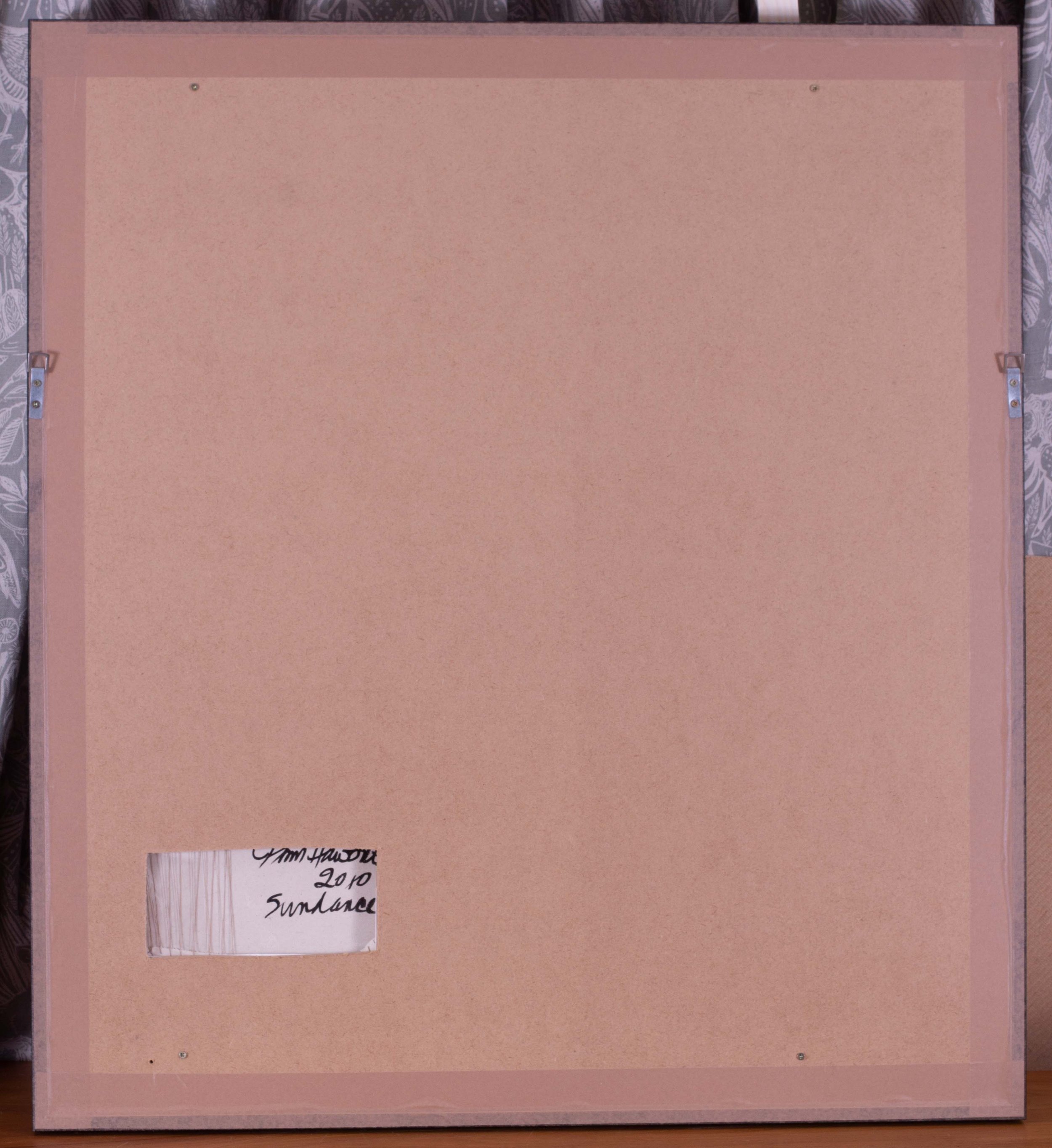Jann Haworth, 'Mickey Merz'
Jann Haworth, (British / American, b. 1942)
Mickey Merz
Signed, and dated ‘Jann Haworth 2010’
Mixed media collage
35.1/4 x 25.1/2 in. (89.5 x 65 cm.)
Provenance: Private collection, Paris
Piasa Paris
Jann Haworth was born in Hollywood, USA. From 1959-61 she attended the University of California, Los Angeles before coming to England in 1961 to attend the Courtauld Institute and then the Slade School of Fine Art from 1962-3. In 1963, whilst a student at the Slade Haworth met Peter Blake at a party and they married in July of that year. Haworth moved into Blake’s Chiswick flat and she set up a studio alongside his where she produced her life-size textile figures. A pioneer of soft sculpture, she is best known as the co-creator of The Beatles’ Sgt. Pepper’s Lonely Hearts Club Band album cover. Haworth is also an advocate for feminist rights, especially for women’s representation in the art world.
Together with Pauline Boty, Jann Haworth was a pioneering exception in the male-dominated world of Pop Art. Both offered a differently gendered take on popular culture.
Haworth grew up in California, but was often on the move with her production designer father and with a familiarity with mass culture. She came to Europe in 1961 and took up a place at the Slade School of Art. Sue Tate notes that the school had a reputation for nurturing female talent and the then Head, William Coldstream, as being a positive influence for women (Sue Tate, Seductive Subversion: Women Pop Artists 1958-68, 2010). Haworth also valued tutor Harold Cohen “an enfant terrible…(who) treated gender as absent… challenged you and respected your arguments.” (Tate, 2010).
Haworth used fabric because it: “served the purpose of my ideas’ and was ‘very much female and something I had the edge on, that I had the knowledge, it was absolutely conscious… I wanted to get into existence to account for what I was and what my interests were.’ She also understood the gendered problematics of the time meant ‘you had to be as good as the men and I loved competing with them…” (Tate, 2010) Haworth’s sculptures combine a learned ‘feminine’ skill, Hollywood spectacle and a ‘twisted’ interpretation of Pop’s challenge to the hierarchy of ‘high’ and ‘low’ art. Without conforming to established Pop iconography she manages to incorporate her identity as an American and as a woman with a particular Pop Art sensibility.
Jann Haworth, (British / American, b. 1942)
Mickey Merz
Signed, and dated ‘Jann Haworth 2010’
Mixed media collage
35.1/4 x 25.1/2 in. (89.5 x 65 cm.)
Provenance: Private collection, Paris
Piasa Paris
Jann Haworth was born in Hollywood, USA. From 1959-61 she attended the University of California, Los Angeles before coming to England in 1961 to attend the Courtauld Institute and then the Slade School of Fine Art from 1962-3. In 1963, whilst a student at the Slade Haworth met Peter Blake at a party and they married in July of that year. Haworth moved into Blake’s Chiswick flat and she set up a studio alongside his where she produced her life-size textile figures. A pioneer of soft sculpture, she is best known as the co-creator of The Beatles’ Sgt. Pepper’s Lonely Hearts Club Band album cover. Haworth is also an advocate for feminist rights, especially for women’s representation in the art world.
Together with Pauline Boty, Jann Haworth was a pioneering exception in the male-dominated world of Pop Art. Both offered a differently gendered take on popular culture.
Haworth grew up in California, but was often on the move with her production designer father and with a familiarity with mass culture. She came to Europe in 1961 and took up a place at the Slade School of Art. Sue Tate notes that the school had a reputation for nurturing female talent and the then Head, William Coldstream, as being a positive influence for women (Sue Tate, Seductive Subversion: Women Pop Artists 1958-68, 2010). Haworth also valued tutor Harold Cohen “an enfant terrible…(who) treated gender as absent… challenged you and respected your arguments.” (Tate, 2010).
Haworth used fabric because it: “served the purpose of my ideas’ and was ‘very much female and something I had the edge on, that I had the knowledge, it was absolutely conscious… I wanted to get into existence to account for what I was and what my interests were.’ She also understood the gendered problematics of the time meant ‘you had to be as good as the men and I loved competing with them…” (Tate, 2010) Haworth’s sculptures combine a learned ‘feminine’ skill, Hollywood spectacle and a ‘twisted’ interpretation of Pop’s challenge to the hierarchy of ‘high’ and ‘low’ art. Without conforming to established Pop iconography she manages to incorporate her identity as an American and as a woman with a particular Pop Art sensibility.
Jann Haworth, (British / American, b. 1942)
Mickey Merz
Signed, and dated ‘Jann Haworth 2010’
Mixed media collage
35.1/4 x 25.1/2 in. (89.5 x 65 cm.)
Provenance: Private collection, Paris
Piasa Paris
Jann Haworth was born in Hollywood, USA. From 1959-61 she attended the University of California, Los Angeles before coming to England in 1961 to attend the Courtauld Institute and then the Slade School of Fine Art from 1962-3. In 1963, whilst a student at the Slade Haworth met Peter Blake at a party and they married in July of that year. Haworth moved into Blake’s Chiswick flat and she set up a studio alongside his where she produced her life-size textile figures. A pioneer of soft sculpture, she is best known as the co-creator of The Beatles’ Sgt. Pepper’s Lonely Hearts Club Band album cover. Haworth is also an advocate for feminist rights, especially for women’s representation in the art world.
Together with Pauline Boty, Jann Haworth was a pioneering exception in the male-dominated world of Pop Art. Both offered a differently gendered take on popular culture.
Haworth grew up in California, but was often on the move with her production designer father and with a familiarity with mass culture. She came to Europe in 1961 and took up a place at the Slade School of Art. Sue Tate notes that the school had a reputation for nurturing female talent and the then Head, William Coldstream, as being a positive influence for women (Sue Tate, Seductive Subversion: Women Pop Artists 1958-68, 2010). Haworth also valued tutor Harold Cohen “an enfant terrible…(who) treated gender as absent… challenged you and respected your arguments.” (Tate, 2010).
Haworth used fabric because it: “served the purpose of my ideas’ and was ‘very much female and something I had the edge on, that I had the knowledge, it was absolutely conscious… I wanted to get into existence to account for what I was and what my interests were.’ She also understood the gendered problematics of the time meant ‘you had to be as good as the men and I loved competing with them…” (Tate, 2010) Haworth’s sculptures combine a learned ‘feminine’ skill, Hollywood spectacle and a ‘twisted’ interpretation of Pop’s challenge to the hierarchy of ‘high’ and ‘low’ art. Without conforming to established Pop iconography she manages to incorporate her identity as an American and as a woman with a particular Pop Art sensibility.

